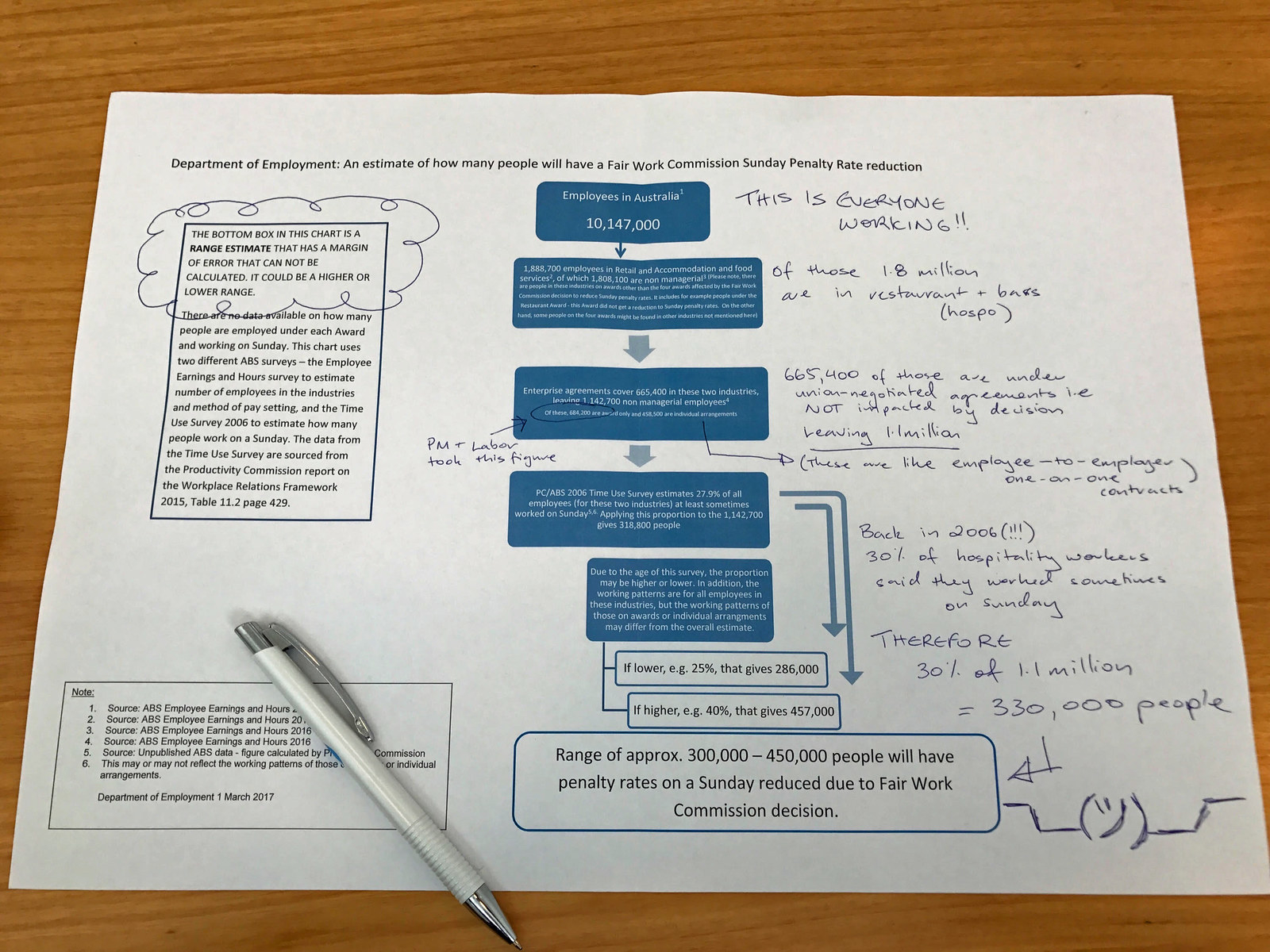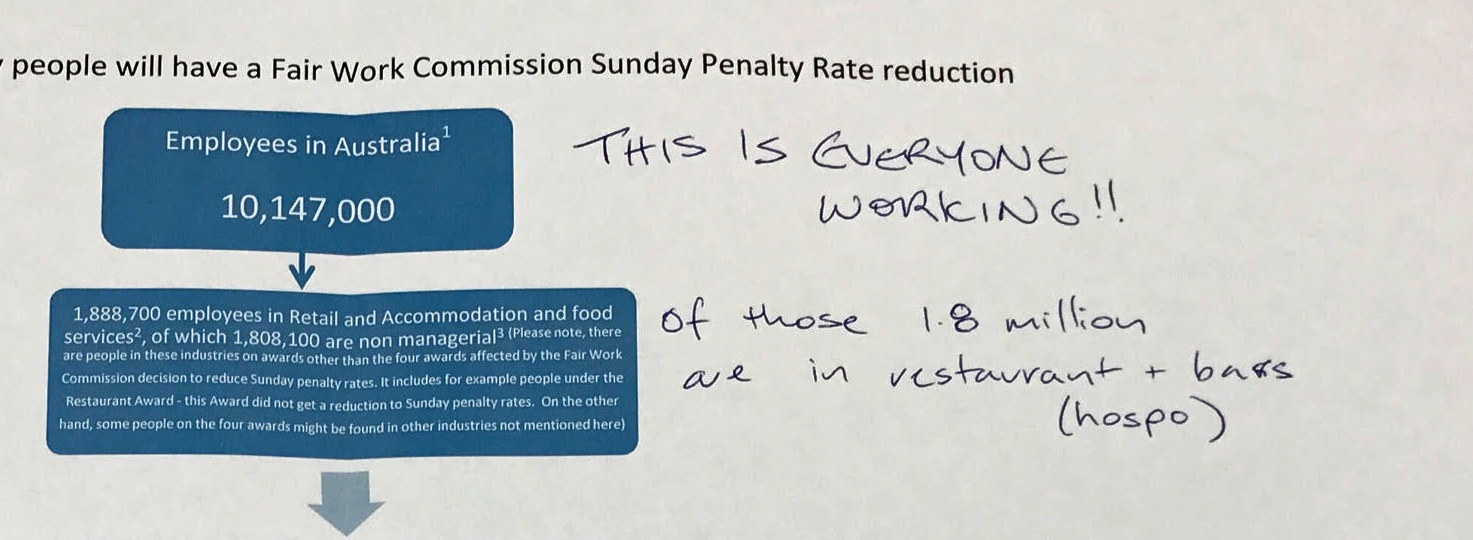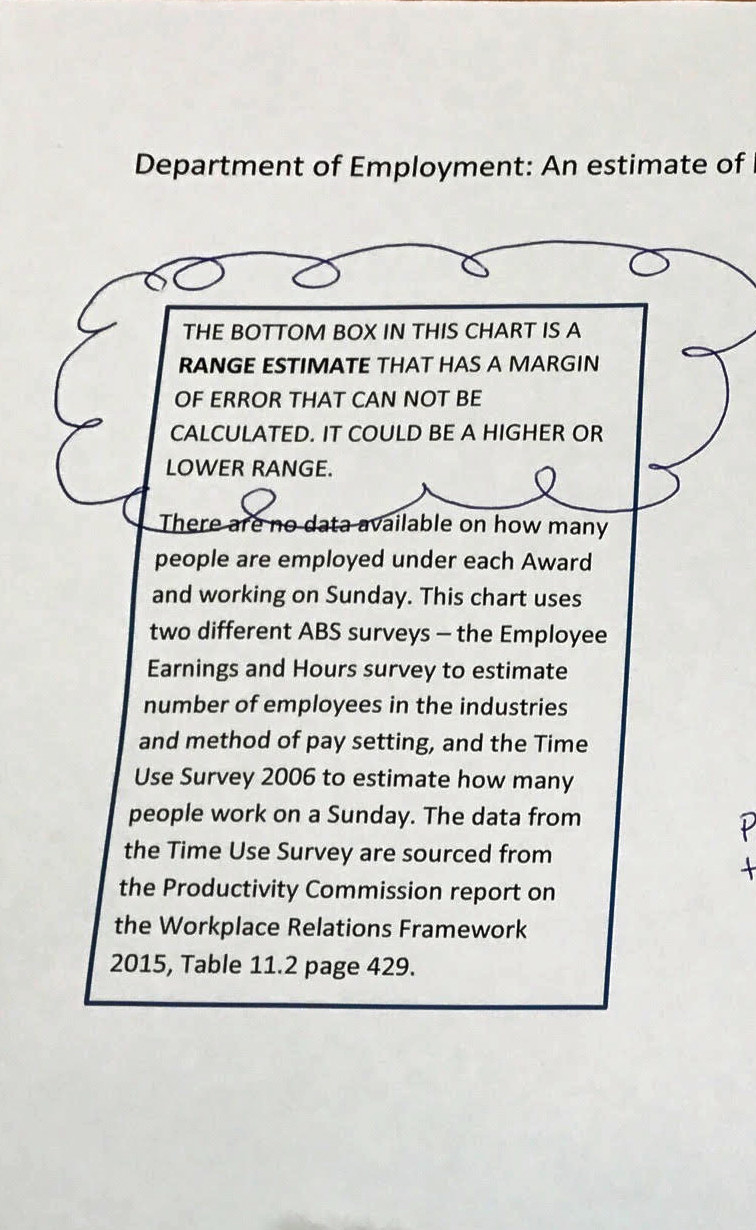The number one political story in Canberra at the moment is the fight over penalty rates after the independent workplace umpire decided they should be cut for some retail and hospitality workers.

Since the decision, Labor has been telling everyone that 700,000 workers will see their pay packets SLASHED by up to $77 per week.
Prime minister Malcolm Turnbull has chosen to distance the government from the decision, but said in Question Time on Monday, "there are 600,000 workers affected".
Along comes The Australian on Thursday with a front page story claiming "as few as 285,000 workers" are affected, citing Department of Employment analysis.

Considering Labor and the unions intend to use penalty rates as the foundation for the mother of all scare campaigns, we thought it'd be good to get to the bottom of just how many people are affected.
Is it 700,000... or 285,000?
BuzzFeed News got its hands on this Department of Employment slide that has been used to prove the ALP is inflating the number. Let's go through it...

It begins with Australian Bureau of Statistics (ABS) numbers from 2016, showing 10 million people are currently employed, of which 1.8 million are non-managers in the retail and hospitality sectors.

Here's where it gets complicated. More than 660,000 of them are on enterprise agreements, which are deals negotiated by the unions that may have traded penalty rates for other conditions. The department won't count them in its figures.

That leaves 1.1 million workers potentially affected. Of those, more than 680,000 are governed by the award system and are therefore affected by the penalty rate cut. According to a ministerial source, this is probably the figure Labor has quoted the past week.
But there are nearly 460,000 others on "individual agreements", which are like one-to-one deals cut between a boss and their employee.
The department simply can't know whether those "individual agreements" are being governed by the award system (and should be included) or not. So to be careful, it has included them.
Now, here's where it gets a bit bullshit. A decade ago a Productivity Commission survey done in collaboration with the ABS found about 30% of people in retail and hospitality worked on Sundays.

But we're a decade on, and there could now be 25% of those workers doing Sunday shifts (as used to get to The Australian's figure), or the number might be closer to 40%.

The department reckons if you apply a range, you'll get anywhere between 300,000 and 450,000 people who work on Sunday and are employed under the relevant retail and hospitality awards.
The department has acknowledged the rubberiness of the figures, saying it's a range estimate "that has a margin of error that cannot be calculated".

The tl;dr is this: Yes, about 700,000 workers COULD be affected, hell more like 1.1 million. But the department estimates only about 30% of those people are actually working on Sundays. Therefore it's likely between 300,000 and 450,000 workers will actually have their wages cut.
